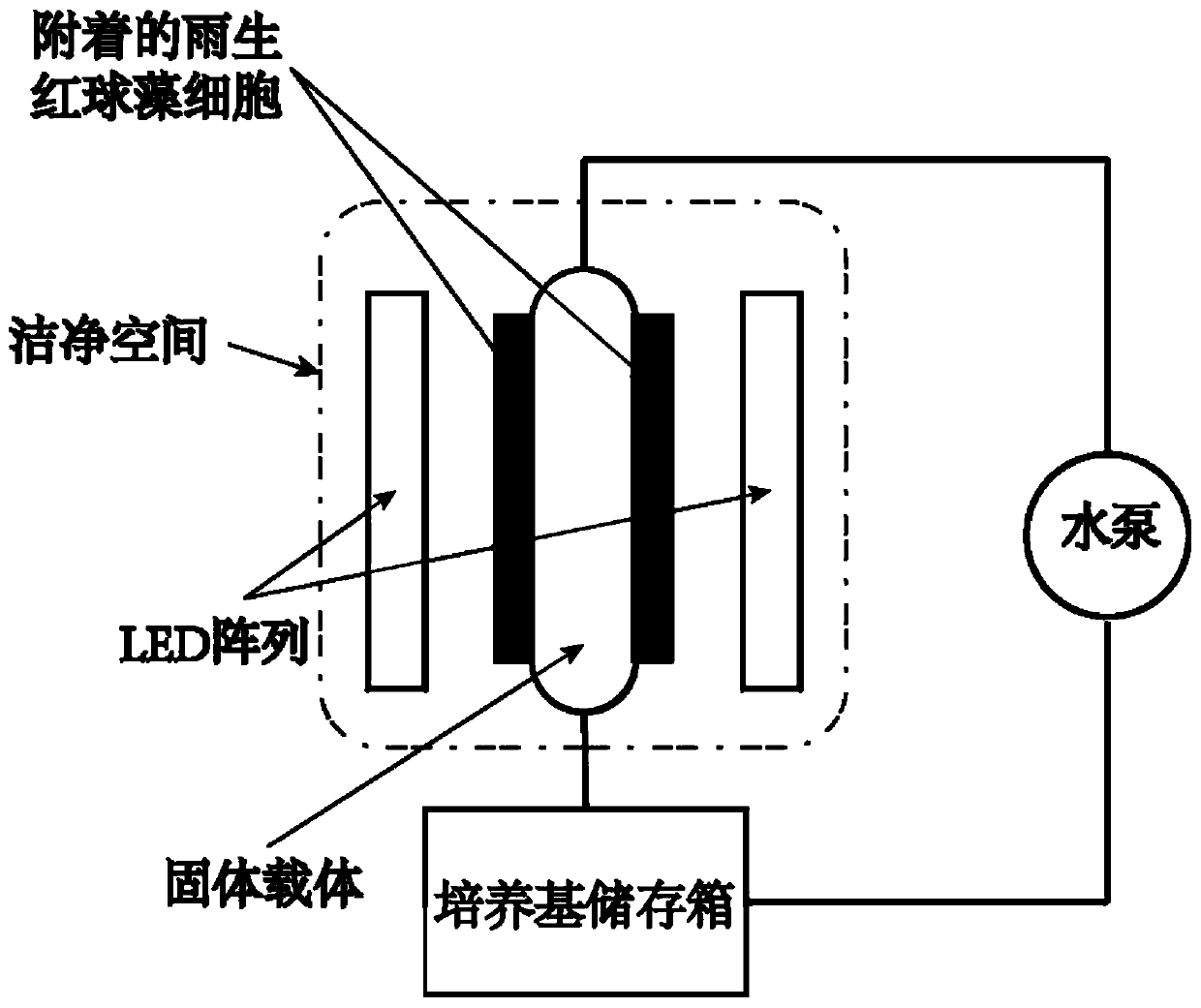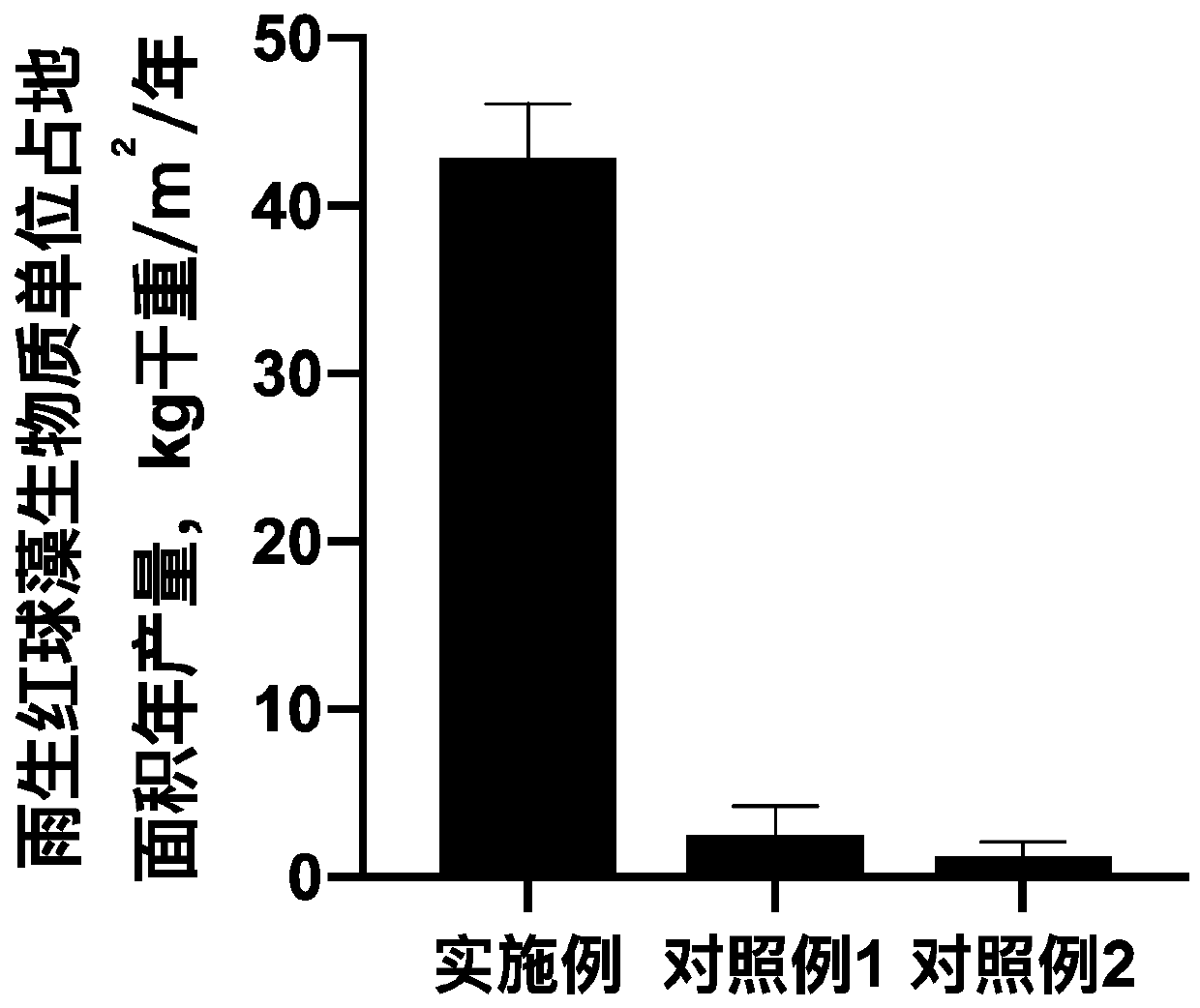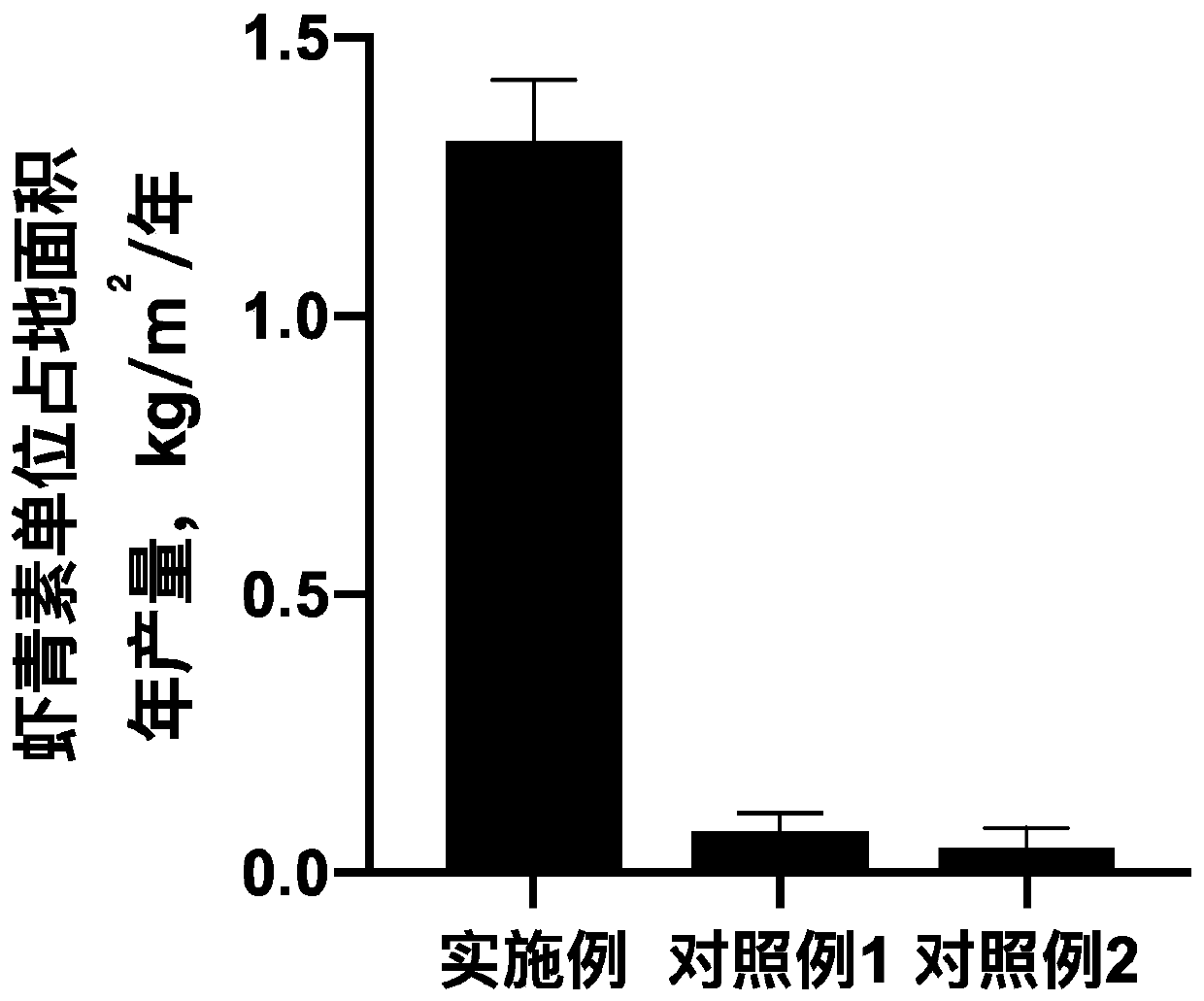Method for producing astaxanthin by using haematococcus pluvialis
A technology of Haematococcus pluvialis and astaxanthin, which is applied in the field of producing astaxanthin by using Haematococcus pluvialls, can solve the problems such as unreachable output, and achieve the effect of improving utilization rate
- Summary
- Abstract
- Description
- Claims
- Application Information
AI Technical Summary
Problems solved by technology
Method used
Image
Examples
Embodiment
[0046] Use UTEX2505 (Texas State University Algae Species Bank, U.S.) as the cultivated Haematococcus pluvialis algae, use the standard 3 times nitrogen BBM liquid medium as the medium, and use natural cotton with a thickness of 1 mm on both sides. A rigid PP plastic mesh of spun cloth is used as a solid support. Place 0.1-meter-wide and 1-meter-high solid carriers vertically on the ground at intervals of 20 cm, that is, place 5 solid carriers in parallel on an area 0.1 meter wide and 1 meter long. Use LED beads with wave peaks of 270nm, 390nm, 450nm, 660nm, and 840nm to form a plate-type LED array. This array is double-sided, that is, the front and back have the same LED beads, and its size is the same as the solid carrier. Place the 4 above-mentioned LED arrays between 5 solid carriers, every two solid carriers clamp a double-sided LED array and the distance between the solid carrier is 10cm. The luminous flux density ratio of the above-mentioned LED array is 1:4:10:8:1, an...
PUM
| Property | Measurement | Unit |
|---|---|---|
| thickness | aaaaa | aaaaa |
Abstract
Description
Claims
Application Information
 Login to View More
Login to View More - R&D
- Intellectual Property
- Life Sciences
- Materials
- Tech Scout
- Unparalleled Data Quality
- Higher Quality Content
- 60% Fewer Hallucinations
Browse by: Latest US Patents, China's latest patents, Technical Efficacy Thesaurus, Application Domain, Technology Topic, Popular Technical Reports.
© 2025 PatSnap. All rights reserved.Legal|Privacy policy|Modern Slavery Act Transparency Statement|Sitemap|About US| Contact US: help@patsnap.com



